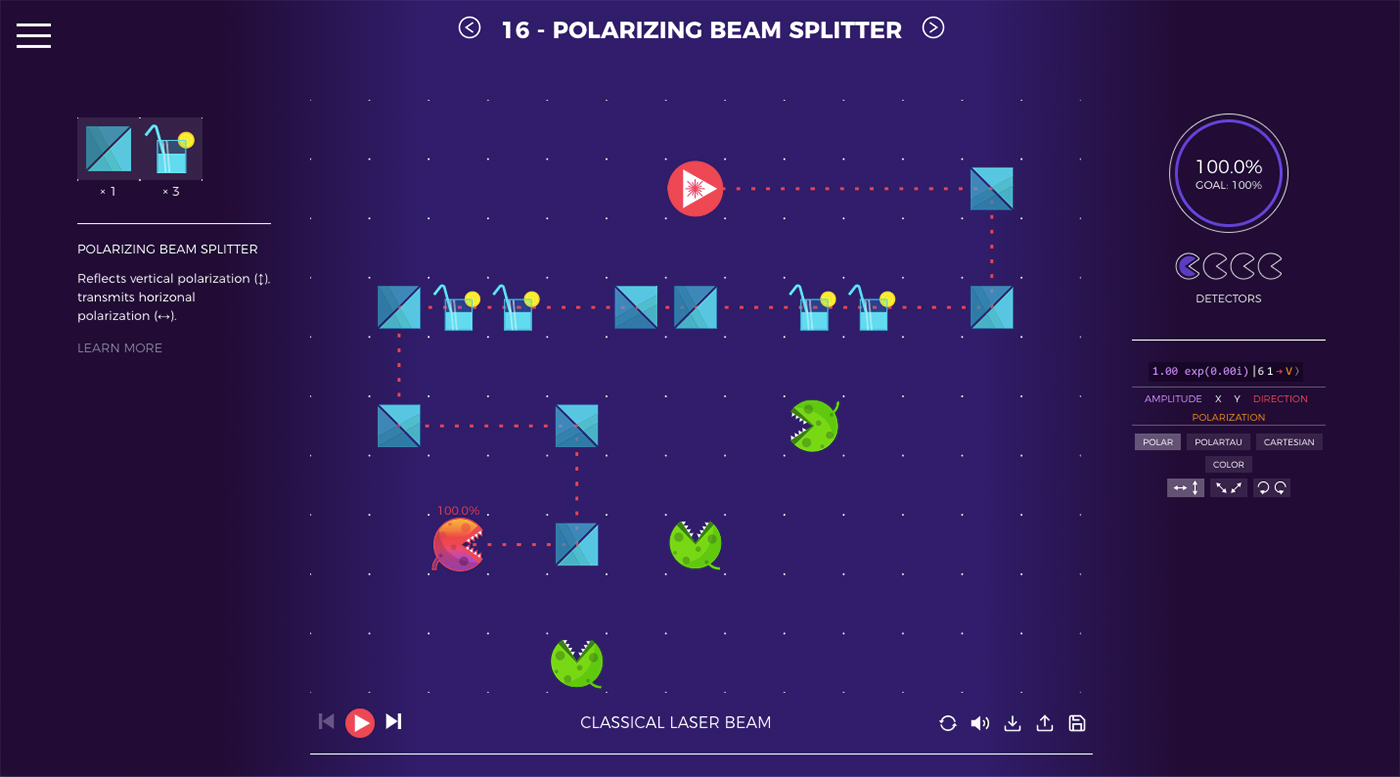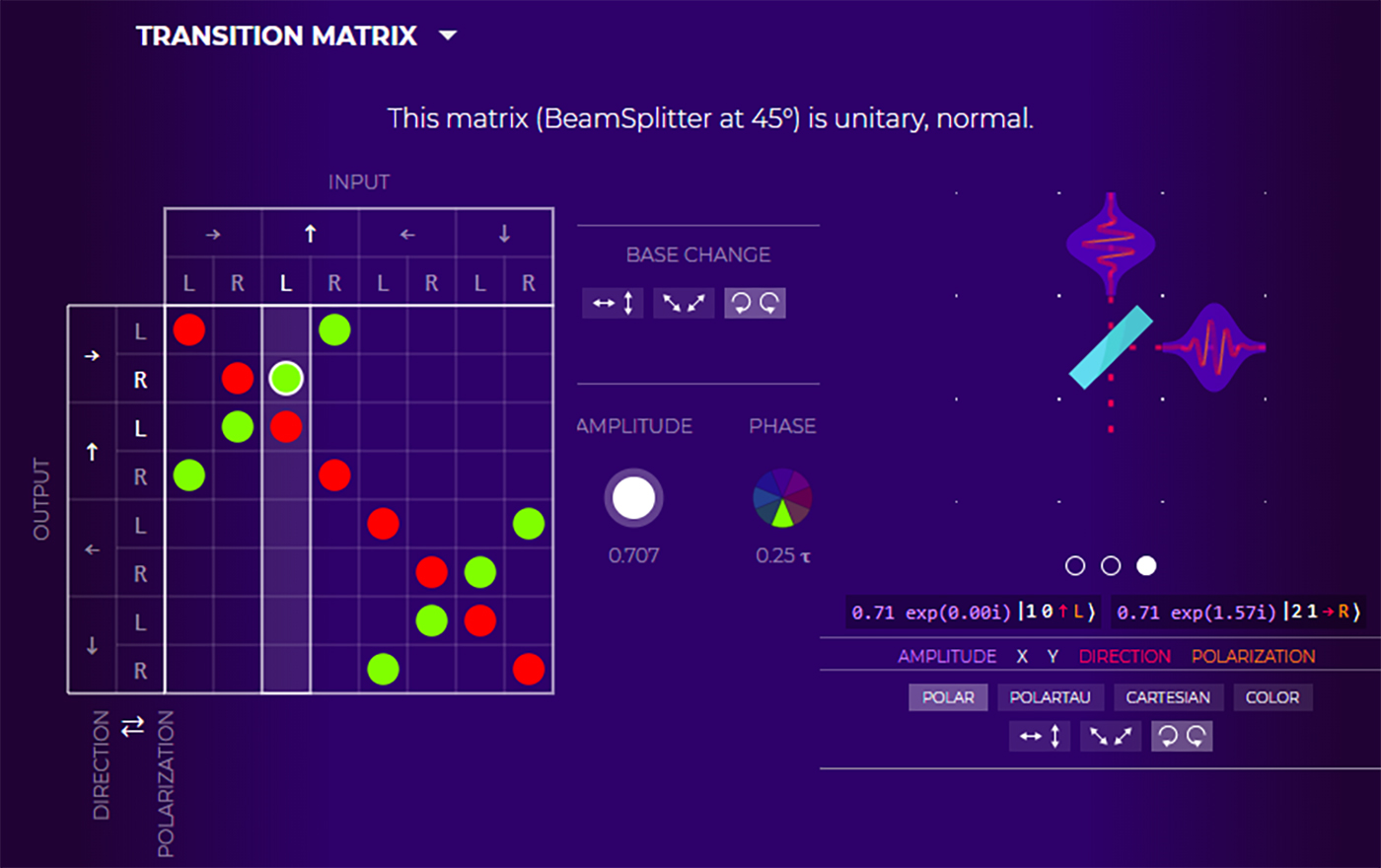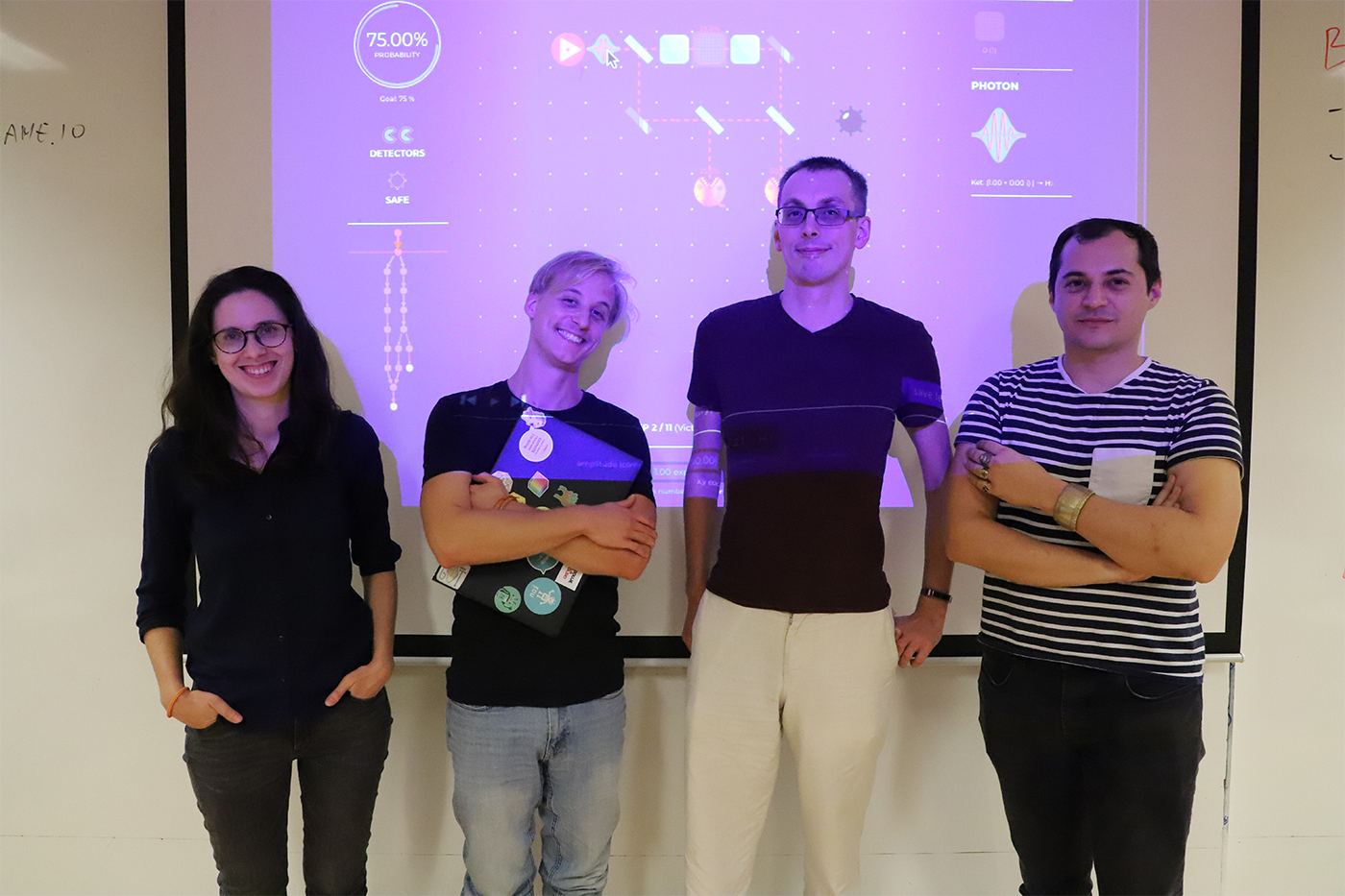Highlights
Ready to play the Quantum Game with Photons 2?
 The Quantum Game with Photons 2 features cute quantum components that follow accurate physics. The first batch of levels are ready to play, with more to come. Players also get the opportunity to design their own challenges.
The Quantum Game with Photons 2 features cute quantum components that follow accurate physics. The first batch of levels are ready to play, with more to come. Players also get the opportunity to design their own challenges.
A sentient rock wants the laser off its face. A Venus flytrap is hungry for light. By adding just two mirrors, can you humour the rock and feed the flytrap?
That puzzle is one of the first levels of the Quantum Game with Photons 2. Developed by a team of scientists, programmers and designers with support in 2019 from the Centre for Quantum Technologies in Singapore, the educational game is now seeking players - and their feedback.
The beta version launched on 3 April 2020. Play the game in your browser at https://quantumgame.io/.
Piotr MigdaÅ‚, who led the game team, wanted to create a playful environment for people to explore quantum phenomena. “The world of quantum is so small. There is no way in daily life to create an environment to simulate the quantum world and let people play with that. This game is like lego blocks for quantum physics. Everyone can play it without knowing quantum physics.”
Piotr is a former theoretical physicist who now works in data science. He launched the original Quantum Game with Photons back in 2016 along with a few collaborators. CQT’s Director Artur Ekert was impressed by the project and invited Piotr to bring a team to CQT to further develop the game – Artur’s instruction: “All I want is the coolest quantum game in the known multiverse, please!”
Quantum for all
The team envisions many purposes for the new Quantum Game, from being a fun puzzle game that anyone can play, to a tool for teaching and learning about quantum mechanics.
Quantum Game with Photons 2 is a drag and drop puzzle game. Players clear a level when they manage to direct photons to the photon detectors (represented by the Venus flytrap) according to the level requirements. At the initial levels, players must just direct the photon to avoid the rock, but there are currently 31 challenges of increasing complexity. Some represent well-known quantum experiments, such as level 10, which lets players construct their own interferometer.
As the game goes on, players get to fiddle with a wider variety of elements, including beamsplitters and polarisation rotators (represented by cocktails, since sugar has the property of rotating light). Other elements include mines that lie in wait. Just a little bit of light is enough to set them off, so beware!
The game also has a sandbox mode, where players can combine any of the elements of the game into experiments of their own design. Players can even share puzzles they made themselves, and these puzzles may later be added as new levels.
There are sophisticated calculations happening in the background. The game visualises the photons as light waves with forms drawn directly from the quantum equations. In the interferometer, for example, players can see how two waves of light interfere with each other and how the amplitude and polarisation of light changes as the light is split, reflected and recombined.
This second version of the game was rebuilt from the bottom to make these background mechanics more powerful and modular. The team also added new elements and an encyclopedia that explains to non-physicists what these devices are, how they work and how they are used in a lab and daily life.
 The element encyclopedia of the game includes interative visualisations of the mathematics of quantum systems.
The element encyclopedia of the game includes interative visualisations of the mathematics of quantum systems.
Another new feature of the game is the Bra Ket Vue library – a set of quantum states and operators viewers. It can be used to make interactive visualisations of quantum states, which can be used as an educational resource in courses or tutorials. The viewers are available on GitHub. The engines of the game, Quantum Tensors, are also available for separate use.
In fact, the whole game has been made open source at https://github.com/Quantum-Game. The team hopes to build a community around the project that will find new applications for their code and artwork.
“Quantum Game is more than just a game,” says Klem Jankiewicz, the team’s lead graphics and user experience (UX) designer. “What is most important is that it is an open source project that can have many different purposes.”
An ongoing project
 Meet the people behind the game! From left, team members Klem, Kuba, Piotr and Philippe showcasing Quantum Game with Photons 2 at CQT. Showing on the screen is a level of the game.
Meet the people behind the game! From left, team members Klem, Kuba, Piotr and Philippe showcasing Quantum Game with Photons 2 at CQT. Showing on the screen is a level of the game.
The team behind the new game, along with Piotr and Klem, was Philippe Cochin, Chiara Decaroli and Kuba Strebeyko. They were hosted at CQT at different times between August and November 2019. Since then, they have continued to polish the game towards the new release. Ivana Kurecic, a CQT visitor with expertise in outreach, also contributed to the project.
The team brought with them not only knowledge of quantum physics and programming, but also experience in jewellery design, yoga, balfolk dancing, and selling professionally branded computer viruses. They documented some of their work in a Medium blog.
In January 2020, Piotr and Klem received a small grant from the Unitary Fund “to develop widgets that embed visualizations of quantum states and ops into blog posts, interactive textbooks, and explorable explanations. These are extensions from their work on a new version of Quantum Game”.
Contact us at quantumgame@quantumlah.org if you’d like to share feedback on the game or hear from us about future events featuring this project.
Now play the game at https://quantumgame.io/
Learn more
Related Stories
Singapore's Minister for Education opens QUANTUM: The Exhibition August 29 2019 | |
 | Flash fiction competition Quantum Shorts is back, now with an ebook too December 10 2019 |






